Office Desks & Tables
Finding the worksurface you need, for the price you want.
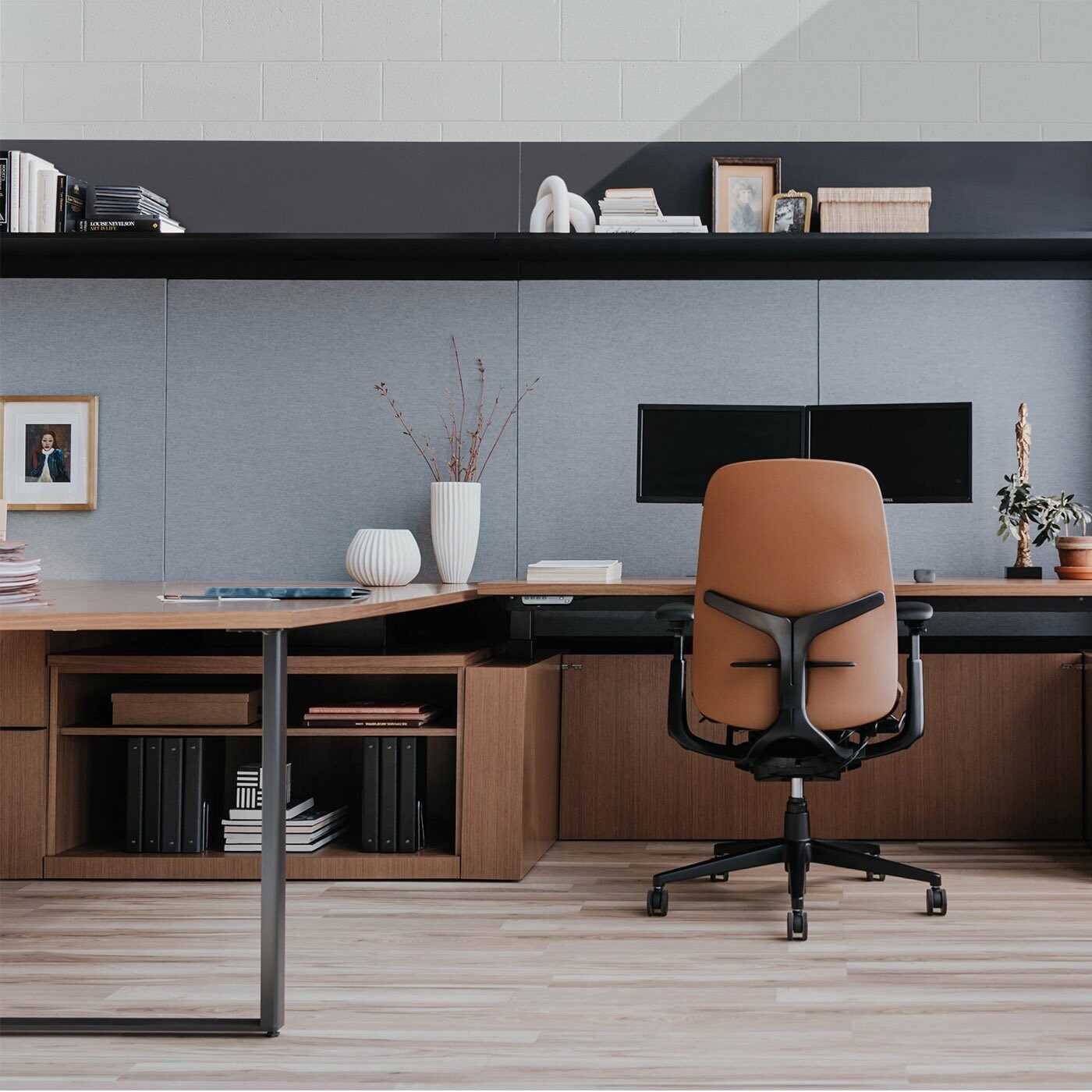
1. What Configuration Do I Want?
There are four common “shapes” for an office desk.
- One single rectangular worksurface
- Two rectangular worksurfaces joined at a 90-degree angle to form an “L”
- Two parallel work surfaces joined by a shorter work surface to create a “U”
- Two unconnected but parallel worksurfaces
How do you know which configuration is best for your workspace and work habits? Ask yourself these three questions to get a feel for which shape is best for your new desk.
- How much work surface space do you need?
- Will you host meetings at your desk and need a space for guests to pull up a chair?
- How much floor space do you have available for your new desk?
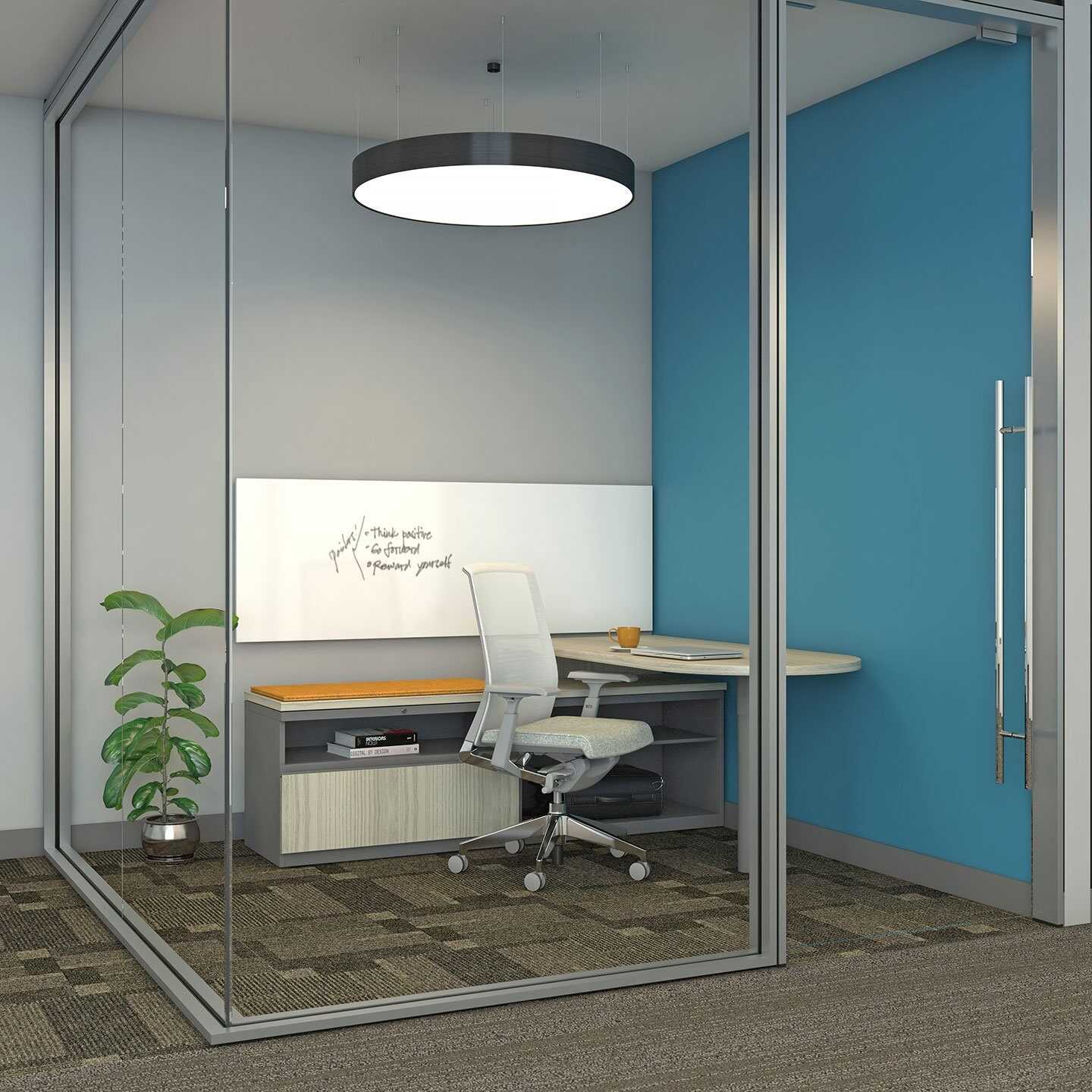
2. How Much Storage Do I Need?
Buying a new desk is the ideal time to take a step back and evaluate just how much storage you need. Do you work with paper documents very often? Do you have large bulky items that you need to discretely store at your workstation? How much of what you are currently storing in your desk needs to be within arms reach rather than the office’s centralized storage?
The most common types of desk storage we see customers using are:
- Under-worksurface pedestals
- These may be fixed (supporting the work surface) or mobile and usually store paper files and small personal items
- Over-head hutch
- Often the same length as one of your worksurfaces, a hutch, is used to store binders and books.
- Wardrobe
- A standing-height wardrobe will either contain one large storage space or will be subdivided to include both shelving and hanging space.
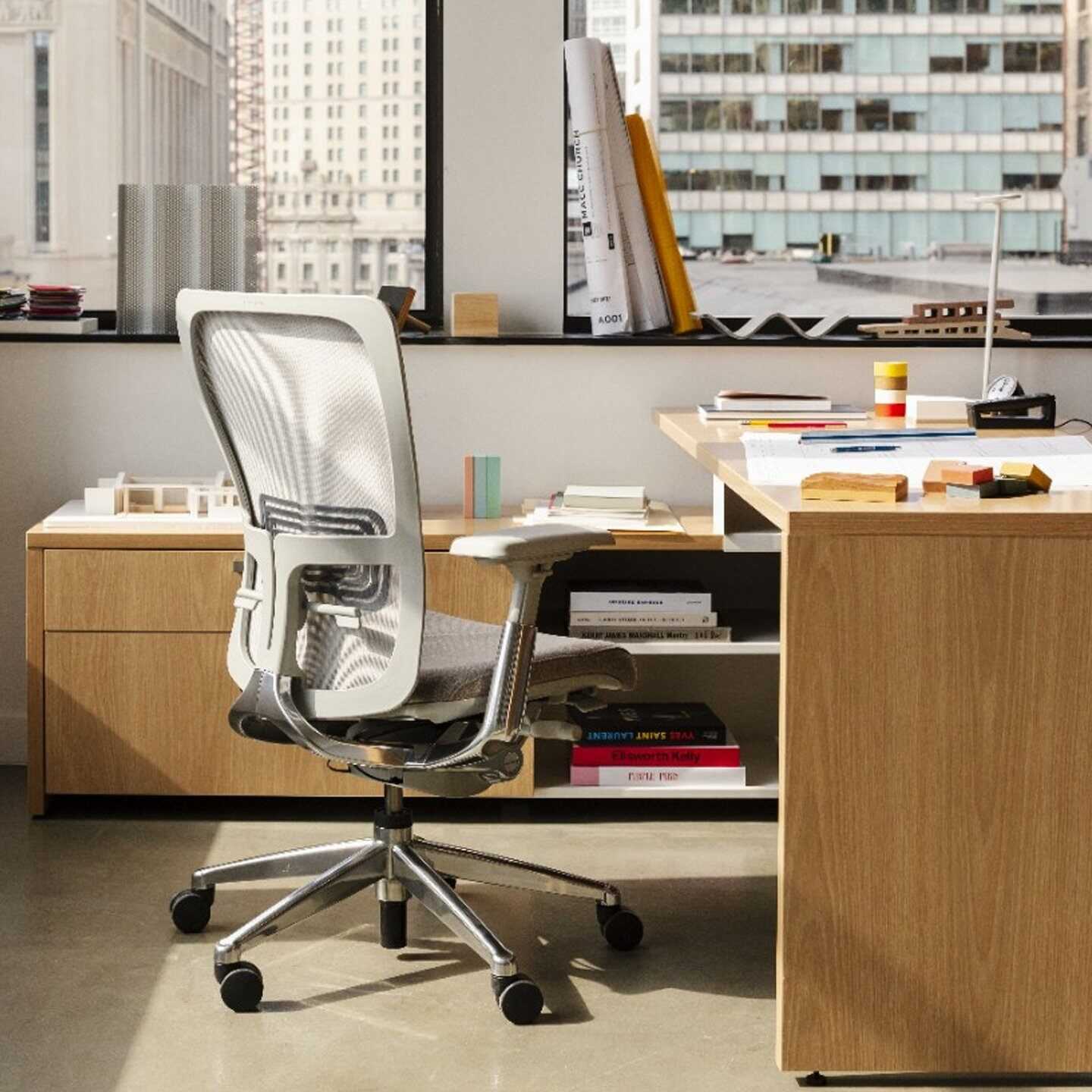
3. What Finishes Do I Prefer?
So you have decided on the size and shape of your new desk, as well as what storage components it will include. Now it’s time for the fun part… picking finishes!
There are practically endless ways you can combine the materials, colours and patterns of a desk, so let’s focus on the most popular options.
Materials
Most modern desks feature a particleboard core with either a laminate or wood veneer finish.
- Wood veneer offers a premium, natural look but is the most expensive and least durable option.
- Laminate is affordable, highly durable, and the top choice for most customers.
For a deeper dive, check out our articles on the pros and cons of laminate vs. wood veneer or TFL vs. HPL laminates to explore cost-effective and durable finishes.
Patterns
If you have chosen a wood veneer finish, then your next choice will be in selecting the species and grain of veneer you want to use.
Laminate options are a little more varied. Many laminates do have patterns designed to look like wood grain, but you also have the opportunity to go with a solid colour or pattern.
Edges
The final aspect of your desk that you need to specify is the edging. Will you go with a flat edge (one of the most common choices) or a sleek-looking knife edge? There are plenty of options available, but here are the six most common edge styles.
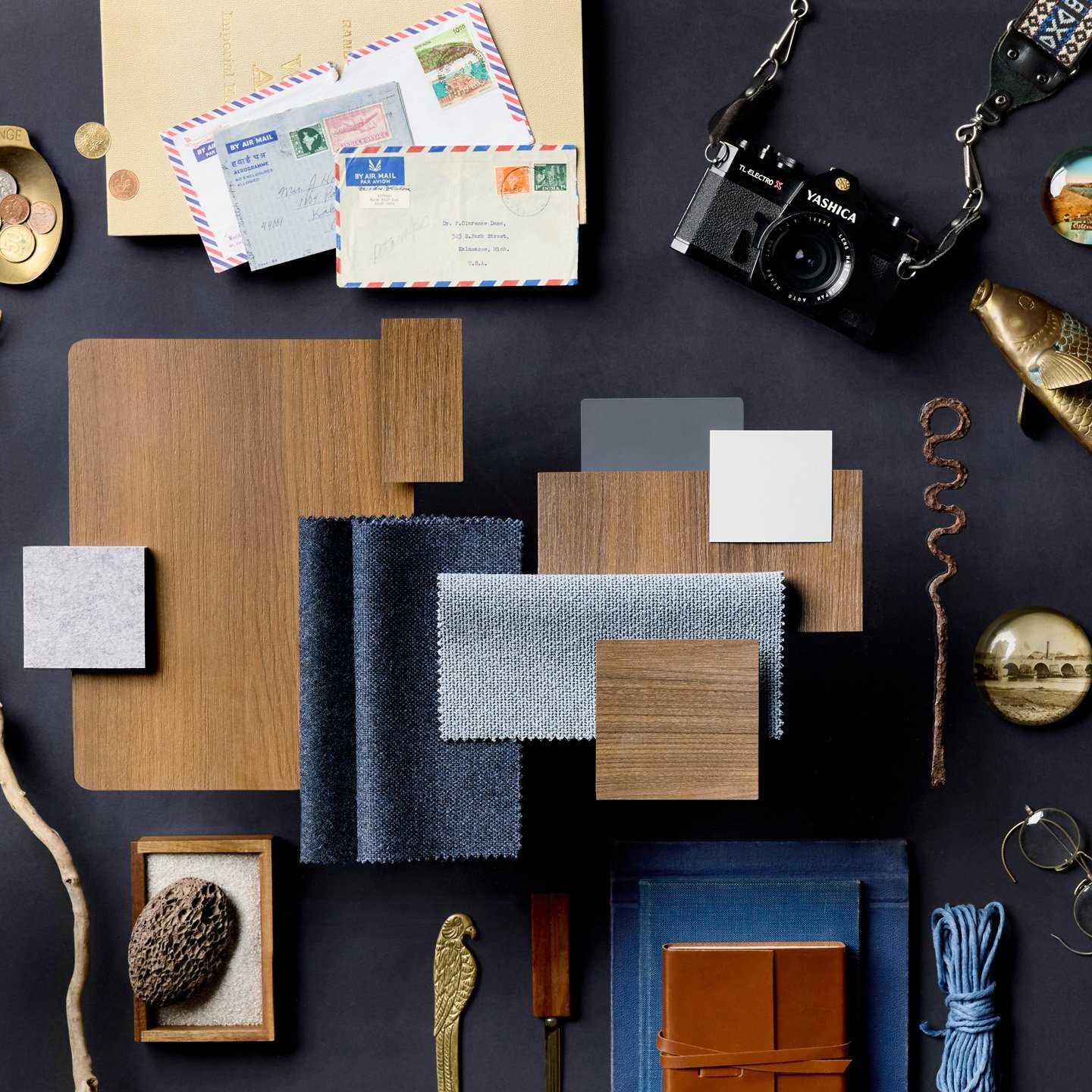
.png?width=1920&height=1080&name=office%20desk%20(1).png)
Your dream desk is waiting—our Office Furniture Buyer’s Guide will lead the way. Start your journey here.
Check out our Office Furniture Buyer’s Guide!
Common Concerns to Watch Out for When Buying a New Desk
Desks are highly customizable, but potential issues can be avoided with proper planning.
- Accessory Compatibility: If using monitor arms or sit-to-stand accessories, ensure your desk has grommet holes or supports edge-mounted installation. Check that any modesty panels won’t obstruct setup.
- Handedness: Fixed pedestals can limit legroom on one side, which may pose challenges when reassigning the desk or relocating it.
- Quality Matters: A poorly made desk can quickly show wear and tear. Choose furniture with long-term warranties that cover replacements, not just repairs.
How Much Does a New Office Desk Cost?
Now for the question, you have been waiting for, just how much is this going to cost me? As with any office furniture, the answer is “it depends.”
While it’s impossible to predict precisely how much your desk will cost without answering all the questions we’ve already discussed, we can give you a rough range to budget as well as break down the primary reasons why the price can be so variable.
When looking to buy a new desk 6’ by 6’ desk (the most common size), we find that you should budget between $900 and $7000.
Where you land within this range (or if you will exceed this range) depends on two primary factors: how much storage you need and what finishes you select.
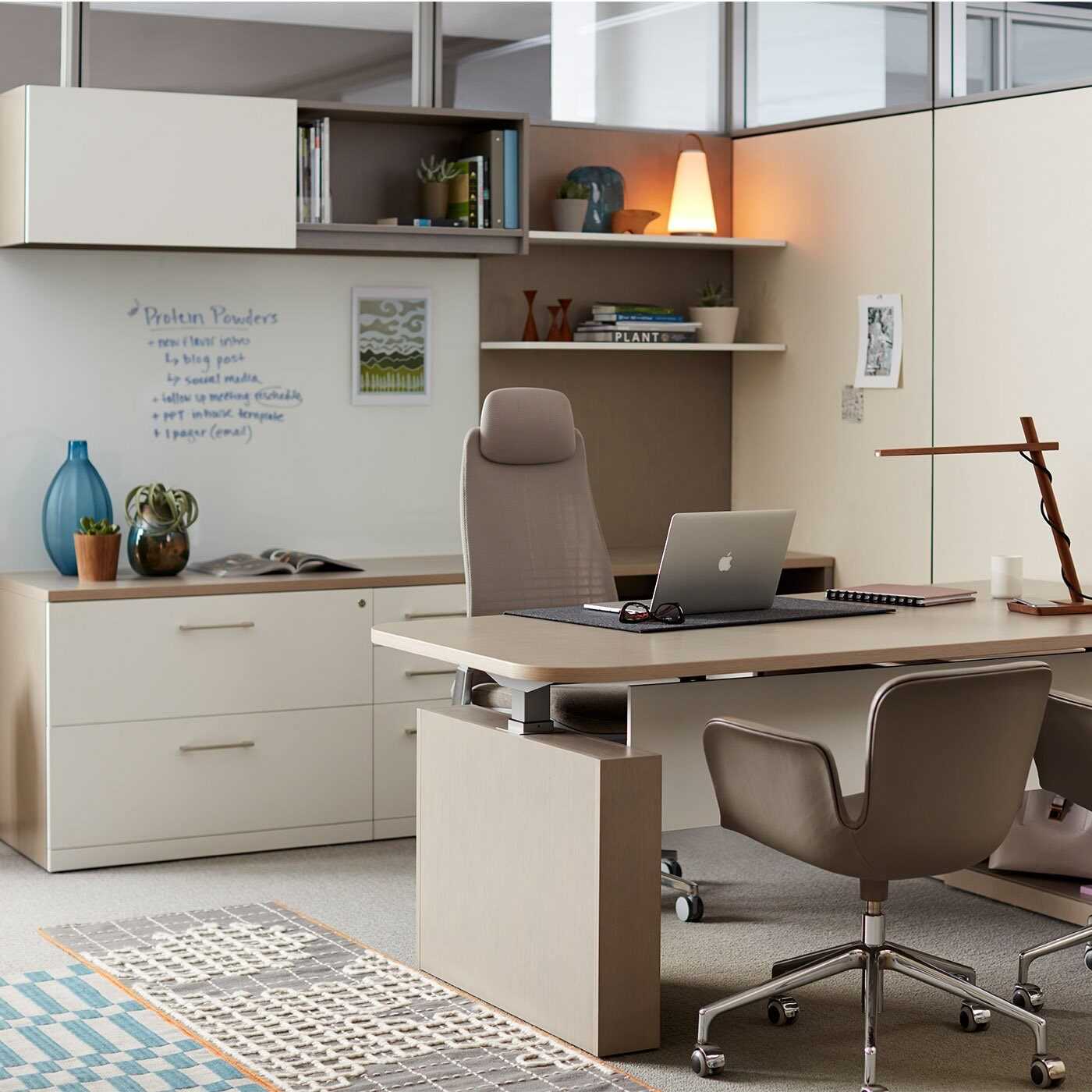
What Kind of Table Do I Need?
While many people may think all tables are created equal, there are several different types of tables that are each designed to fulfill a specific purpose.
The most popular types of tables among our customers are side tables, community tables, training tables and meeting or conference tables.
Key Considerations When Selecting a Table
There are many, many options when picking a new table for your office. Once you have selected the type of table that will best suit your needs, your desired dimensions and the perfect finishes (most people’s favourite part), there are a few other critical questions that you need to answer.
- Will you require built-in power, data or A/V?
- Do you want to incorporate a wireless mobile charging solution?
- How frequently will the table be moved? Should it be on casters or glides?
- Should the table be café, counter or bar height?
- Is the table going to be in a high-traffic area? Your chosen finish must be sufficiently durable!
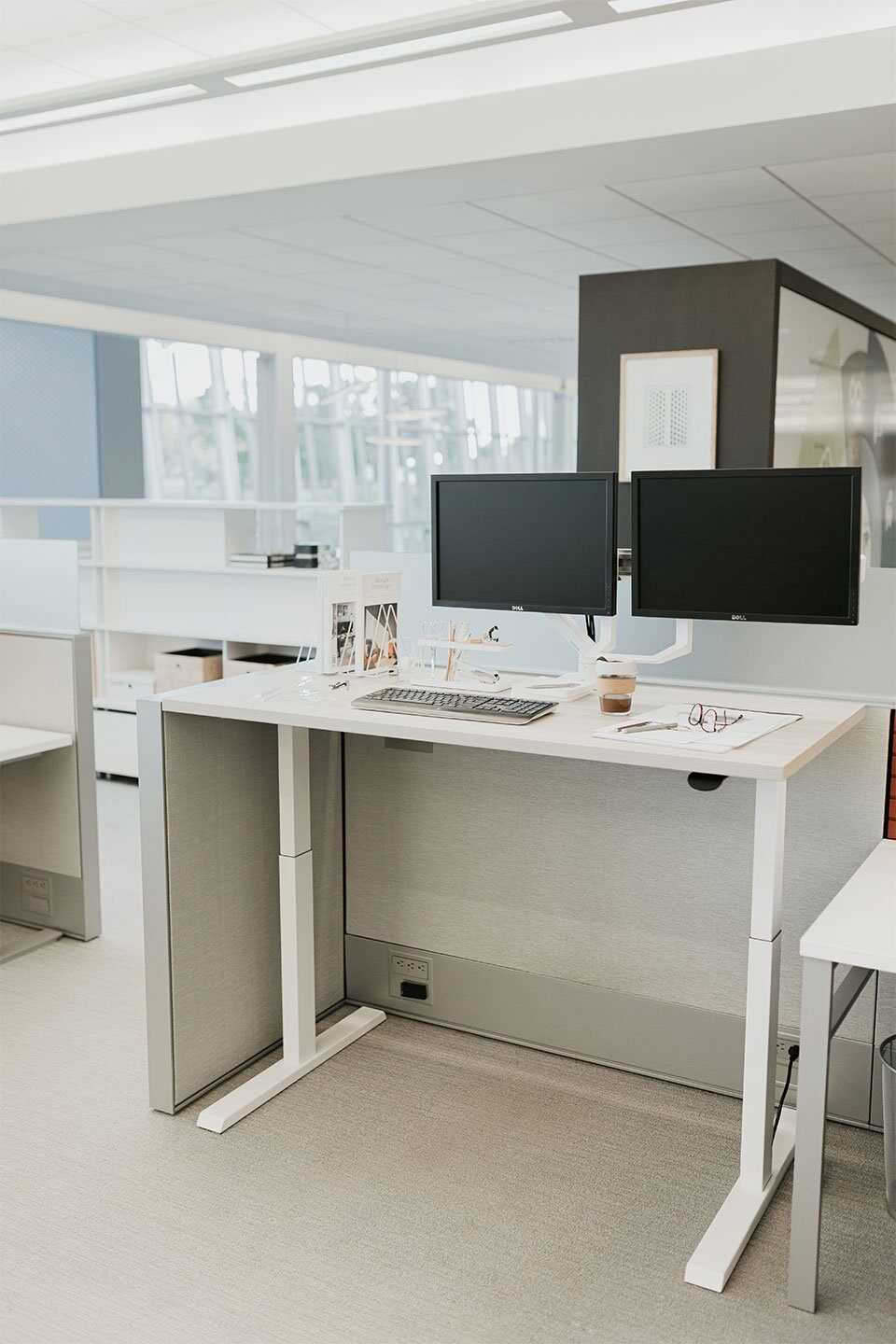
How Much Does a New Table Cost?
Unfortunately, tables can vary so drastically in price that giving you a range as we have with our other furniture products would not be helpful. A modest side table is orders of magnitude less expensive than a 30-foot, solid oak conference table (yes, we did indeed receive a request for a 30-foot table).
Request a Free Consultation
Have more questions about desks and tables? We are here to help! All of our consultations are completely free, request one today and we can answer your remaining questions and arrange for a viewing of our working showroom where you can see a variety of office desk and table configurations.

